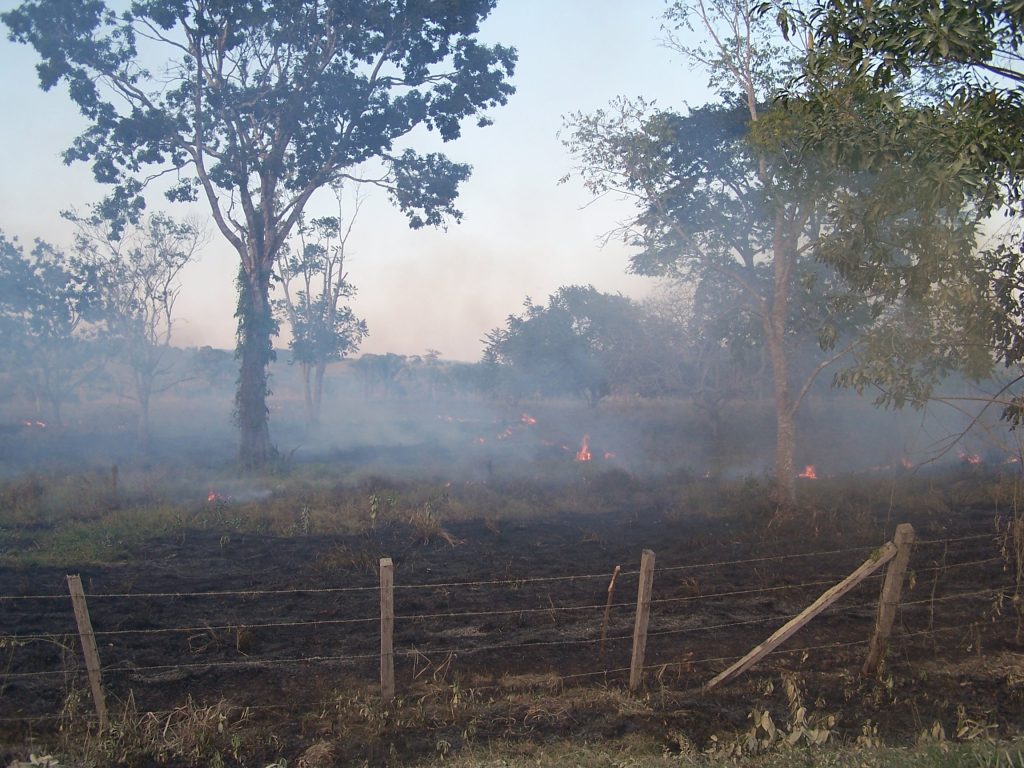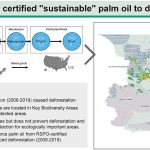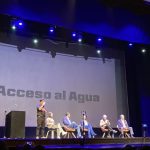This blog post is the foundation for an upcoming TNRC Learning Series webinar with Dr. Jennifer Devine and contributing practitioners. Dr. Devine is Assistant Professor in the Department of Geography at Texas State University. She studies the environmental impacts of drug trafficking, sustainable development, environmental justice movements, tourism and cultural heritage management. She has recently published articles on these topics in Proceedings of the National Academy of Sciences, Global Environmental Change, the Journal of Peasant Studies, Land Use Policy, Antipode, and the Journal of Latin American Geography. Popular press outlets worldwide, such as NPR and BBC Science Focus, have reported on her research team’s findings.
Political ecology and corruption
“A political ecology lens can broaden practitioners’ understanding of what drives corruption and conservation crime.“
Political ecology studies how politics, economics and culture shape environmental change, and vice versa. TNRC recently published an introduction to political ecology that captures the key points and possibilities of this multi-disciplinary approach (Nash 2020). In short, political ecology focuses on how politics and power relations impact a) the distribution of costs and benefits of environmental change, and b) how inequality and unequal resource distribution often drive conservation crime (see Bryant and Bailey 1996, West 2016).
Political ecology provides an effective way to understand various elements of corruption, which is commonly defined as the abuse of entrusted power for private gain (transparency.org). Political ecologists start from the assumption that environmental issues and problems are always political. Who holds power and how did they obtain power? How are individuals or organizations abusing power, and to what end? What are the environmental and social consequences of corruption? And, what can be done to undermine corruption and strengthen governance? “Political” in political ecology, thus, includes a focus on power relations in addition to the formal de jure legal realm of policies, parties, and treaties.
This blog post details a few key ways that political ecology can contribute to understanding corruption and drivers of conservation crime using the example of illegal deforestation in Guatemala. My second post in this series, co-authored with Jenny Baca from Measuring Impact II, will focus on putting these ideas into anti-corruption programing and practice.
Narco-deforestation and connections to corruption in Guatemala
A conservation paradox is unfolding in Guatemala’s protected areas. In the Maya Biosphere, national parks in the reserve’s west have experienced high deforestation rates since their creation despite strict conservation laws. By contrast, in the reserve’s eastern half, where people live and manage forest resources and national parks are adequately funded, there is close to zero deforestation and the reserve’s biodiversity is in the best ecological health. What explains rampant corruption and conservation crime in some areas versus successful conservation outcomes in others?
In a forthcoming webinar on August 13, 2020, I will use a political ecology approach to explain how deforestation is driven by illegal cattle ranching activities funded by drug trafficking organizations (DTOs). In short, DTOs ranch cattle to claim drug smuggling routes and to launder narco-capital. My research team employs remote sensing and ethnographic methods to define the mechanisms and measure the magnitude of “narco-deforestation” in the Maya Biosphere and in protected areas throughout Central America.
Corruption enables DTOs to illegally ranch cattle in protected areas with impunity. Political ecology can help illuminate what drives corruption by challenging taken-for-granted definitions of corruption and demonstrating how corruption impacts governance. In the Maya Biosphere, corruption is not limited to an abuse of entrusted power. State officials and the press also describe corruption in terms of impunity, lawlessness, and the absence of governance in the reserve. Both of these definitions fail to capture how corruption creates new governance relations, practices, and norms that undermine biodiversity conservation. The standard definition of corruption is not wrong, just insufficient. Political ecology asks us to map corruption as a set of relations and practices in each context, rather than define it beforehand as a term of reference.
My research demonstrates that corruption enables DTOs to create territories of informal governance in the Maya Biosphere through a lethal mixture of violence and economic coercion (Devine et. al, 2020, Wrathall et. al 2020). These narco-territories do not exist in opposition to the state or formal institutions of national and global governance. Rather, political ecology illustrates how narco-deforestation is, in part, a product of the global “War on Drugs” and strict conservation policies combined with Guatemala’s poverty, land tenure inequality, and weak state institutions. Political ecology understands corruption as the abuse of entrusted power for private individual gain and as a system of governance that reproduces acute inequality and injustice through dispossession in ways that are often legal. Anti-corruption efforts need to be understood in relation to other development challenges and ensure that anti-corruption work bolsters equality and participatory democracy (De Grassi 2020).
Political ecology also illuminates why community resource management has succeeded in protecting forest cover and biodiversity. Given their history of customary land use, many Indigenous and peasant residents of the Maya Biosphere resented the newly imposed land use restrictions accompanying the creation of the reserve in 1990. When reserve residents saw the opportunity to form government-granted community forestry concessions, they organized themselves into cooperatives with the support of conservation organizations. Between 1994 and 2000, reserve residents worked with state officials to create 12 community forest concessions managing half a million hectares of forest. Twenty years later, forest concessionaires have demonstrated that communal resource management is an effective conservation strategy that economically benefits 30,000 people and plays a key role in increasing regional security. Forest concessionaires defend their forests from narco-land grabs occurring in national parks and in their forest concessions and call themselves the “guardians of the forest.”
How can political ecology deepen our understanding of what drives corruption and conservation crime?
The remainder of this blog post details how political ecology can contribute to understanding corruption in Guatemala and beyond with the goal of bridging political ecology and conservation practice. A political ecology lens can broaden practitioners’ understanding of what drives corruption and conservation crime by helping to:
1Integrate social and environment analysis
Political ecology insists on incorporating ecological analysis into anti-corruption programming and conservation practice. Political ecologists are critical of political economy approaches that define nature solely in terms of commodifiable resources, or approaches that reduce the meaning of environment to local context. Rather, political ecologists understand the environment as biophysical processes and their social impacts that include drought, disease, fungal blight, and fire. Political ecology focuses on the interplay of society and nature: socio-environmental relations. In the Maya Biosphere, this translates into using environmental science to illustrate ancestral land use to defend land rights in the present, as well as combining land change science with ethnographic research to reveal the environmental impacts of drug trafficking that organized crime tries to hide.
2Interrogate taken-for-granted and de jure definitions of corruption and illegality
What is corruption? Who has the power to define one resource use as legal or illegal? These are not neutral questions or categories, but their definitions are reflections of power. A political ecology approach insists that we question who has the power to define certain land uses, and not others, as illegal, and understand how legality is not the same as legitimacy. In the Maya Biosphere, forest residents critique conservation laws and multimillion-dollar development projects as illegitimate when they encroach on their rights to manage forest lands and resources and exclude them from the decision-making table. In the national parks in the reserve’s west, conservation law defines subsistence farmers as illegal squatters, which makes them more vulnerable to organized crime, and leaves many with few options to engage in practices identified as illegal.
3Focus on extreme inequalities in land and resource distribution that often drive conservation crime
Political ecologists seek to understand relations of inequality to address landlessness and extreme poverty producing environmental crises and biodiversity loss in the first place. These inequalities are at the heart of many socio-environmental problems, and political ecology can illustrate how alleviating these inequalities, which may appear unrelated at first glance to corruption or conservation crime, can help address the root drivers of these activities. Community foresters in Guatemala define their movement first and foremost as a means to secure long term usufruct rights in the Maya Biosphere. Good governance, increased security, and biodiversity conservation are often byproducts of addressing land tenure inequality and poverty in protected areas across the Global South.
4Seek alliances with legitimate local social movements
The solutions to problems of corruption and conservation crime are often best defined by local actors. Social movements, like community forestry in Guatemala, reflect legitimacy on the ground and often emerge when legitimacy and legality are at odds. In the Maya Biosphere, residents argue that state policies that threaten their land rights are corrupt, regardless of their legality. Understanding legitimate leaders and land uses is critical to unlocking the “political will” necessary for successful project implementation. In the webinar, we will discuss how this translates into empowering local, marginalized communities as protagonists at every stage of programming. Community foresters’ roles as protagonists in resource management and their political legitimacy explains much of the movement’s political, economic, and conservation achievements.
5Analyze drivers of corruption and environmental crime at local, national, and global levels
Political ecology insists that what looks like localized struggles are actually power dynamics operating at national and global scales transforming local landscapes. Political ecologists use multi-scalar analysis to demonstrate how local degradation is the product of dynamics unfolding elsewhere. In the Maya Biosphere, political ecology reveals that extreme poverty, Indigenous land dispossession, failed agrarian reforms, and Drug War violence occurring outside the reserve are root drivers of corruption and narco-deforestation inside the protected area.





